Written By:
Will Purcell
Regularly publishing content is a great way to boost traffic and expand your reach. That’s especially true for businesses looking to generate more leads and convert them into customers. However, for the best results, an effective content strategy is essential.
In the following article we explain why by:
-
Defining content marketing
-
Explaining its importance
-
Outlining the step-by-step process to create a strategy
A lot has changed in the world of content strategy, but for businesses involved with consistent outreach, the model for success has progressively evolved over the past two decades.
That’s because advancements in technology—mainly due to the Internet—have given consumers more control in the sales process than ever before. Specifically, the ability to access information with a simple online search or inquiry has changed consumer behavior.
As a result, the process to reach new prospects, convert them into leads, and nurture them through the sales funnel has changed dramatically.
To that end, businesses need to adjust their outreach efforts in order to better meet the needs of consumers. An effective way to do this, is by creating content marketing campaigns.
What is content marketing?
Content marketing is simply a marketing strategy designed to generate interest in a product or service by creating and distributing content that contains relevant information to a specific audience.
Think of content marketing as an avenue to tell your story, but in a way that makes your audience want to listen. In order to do this, content must be:
- Relevant
- Interesting
- Discoverable
Additional Resources:
- 9 KPIs that Every Content Marketer Needs to Track
- Content Marketing ROI: How to Track Your Blog’s Performance
- Brand Voice Guide: How to Define, Validate & Utilize Brand Voice in Your Content Marketing
Why create content?
We’ve all heard the phrase “content is king”, but why exactly is content king?
Pepperland’s Senior Content Specialist, Tim Stobierski, explains:
“Without content, a company or organization simply isn’t likely to be found in search results. And let’s be realistic: Search is one of the primary ways that people learn about anything today.”
Think about how many times just in the past week you’ve used a search engine. Chances are, it’s been more than once. That’s why it’s essential for companies to utilize content to their advantage.
Maximize your Content with our FREE Editorial Calendar Template
Audiences have questions regarding their challenges or pain points. That is why great content helps bridge the gap between their questions by showcasing the solutions that your business provides.
How to Develop a Content Strategy for your Business
So now that you understand what a content marketing strategy is and why it’s important, it’s time to develop one for your business. For the purpose of this article, we’ll take a look at 6 essential steps your marketing team can take to generate the best results.
To get started, think about these three questions:
- What do I want my content to accomplish?
- Who do I want to read or consume my content?
- How will I distribute content in an effective, timely manner?
1. Define Content Marketing Goals.
Think about content marketing campaigns as a cross-country road trip. You wouldn’t just jump in the car and take off. You need a plan. Where are you going? How long will it take to get there? Where should you stop for gas, food, or lodgings along the way?
Similar to planning a road trip, content marketing campaigns need an outline with clearly defined goals in order to be successful.
Creating a content marketing strategy varies based on the unique needs of an organization, it’s best to develop a content campaign that aims to improve the the following elements for your website:
- Search Engine Optimization
- Education
- Brand Awareness
- Conversion
- Retention and Brand Loyalty
Each piece of content for a campaign, start-to-finish, should be created with these goals in mind. It’s also important to create SMART goals for your content strategy in order to establish realistic, measurable expectations in a timely manner.
2. Determine who your audience is.
Understanding who your audience is arguably the most important aspect of a successful content marketing strategy. Think about your customers and clients, chances are they use your services and products to address a specific need.
Content can, and should be used the same way. The key for a successful content strategy is to find out who your audience is and provide answers to the questions they’re asking.
In order to do this, you need to create a buyer persona.
Personas are critical to creating relevant, interesting content because they capture your ideal customer’s demographics, motivations, priorities, challenges, common behaviors, and the questions that they ask as they progress along the buyer’s journey.
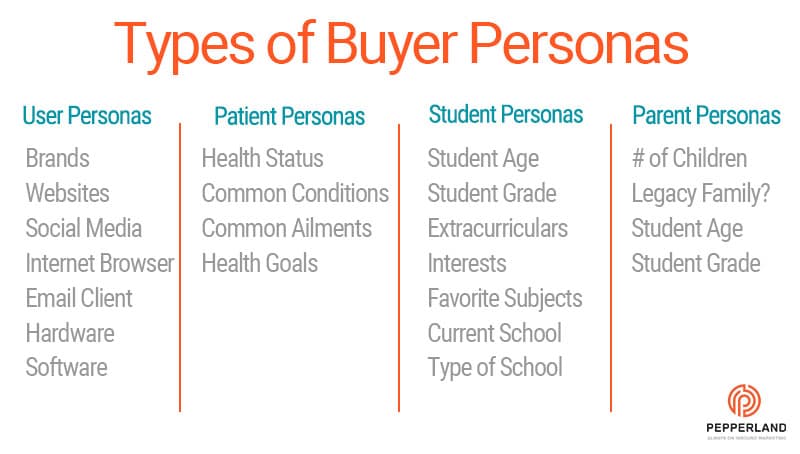
A buyer persona highlights the “who” and “what” for your content strategy in that it reveals who your audience is and what their challenges are. From there, you can start to brainstorm solutions for those challenges in helpful and insightful ways.
Check out our Buyer Persona Template and Toolkit to learn more about the different kinds of information you should aim to capture in your buyer persona.
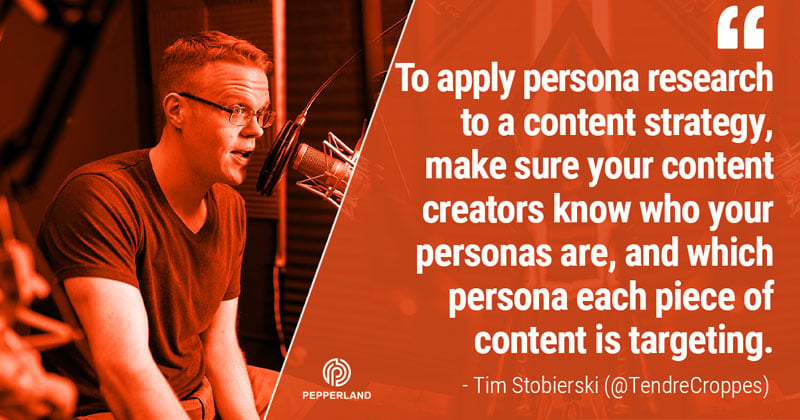
3. Choose what type of content you’ll want to publish.
It’s not uncommon for people to consider the term ‘content’ synonymous with blogging, but content is not restricted to just one form.
Ultimately, content is anything that you put up on your website with the intention of attracting, informing, entertaining, or influencing visitors to your site.
Below are some common examples:
- Basic information on your website (such as your homepage, “About Us” page, directions to your destination, or FAQs)
- Blog posts on topics that your potential guests might find interesting
- Social media posts sharing your blog content
- Visual content, like images, graphics, and video
- Calls-to-action
- Ebooks, webinars, checklists, and other free content offers
- Emails
Finding the right type of content for your organization depends on both your specific industry and your ideal persona.
For example, if your ideal persona has a pain point that can be best addressed through visual guidelines, then videos or graphics might offer the best solution. Or, if an ideal persona simply needs a quick primer on your business, then a brochure or pamphlet might work best.
One question you could have regarding content creation might be: Can I incorporate more than one form of content for my campaign? The answer is yes, absolutely.
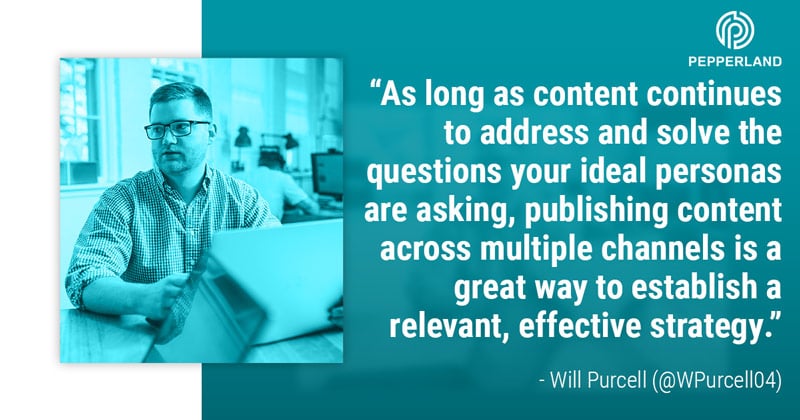
4. Brainstorm topics for Content Strategy.
There are seemingly countless exercises, programs, and thought processes involved with brainstorming. For the purpose of creating successful content, however, your most effective brainstorming tool involves keyword research.
That’s because keyword research not only reveals what your personas are asking, but also the means in which they are asking it.
What are they typing into search engines? What high ranking content currently exists to guide their search? How should your content emulate these results? Or, how can your content differentiate from these results to build greater value for the searcher?
These questions can help identify relevant topics for your content. That’s why keyword research and brainstorming topics goes hand-in-hand.
And, when it comes to finding helpful resources to conduct your research, there are several platforms to consider, some of our favorites include:
- SEM Rush
- Ahrefs
- Google Search Console
- Moz
- SEO Minion
5. Schedule your content using an editorial calendar.
Once you have an idea of why you’re publishing content, whom it’s meant for, and what specific topics will be covered, it’s important to bring your strategy together in a clear, cohesive way. To do this, you’ll need an editorial calendar.
An editorial calendar is simply a document that organizes and structures content in one centralized place.
The key factor for an editorial calendar is that it allows collaboration between multiple departments within an organization, which helps to keep everyone on the same page. We recommend using Google Sheets because it allows organizations to collaborate and freely share documents, which can also link to other sheets in different files as well.
An editorial calendar is more than just an organizational document too, in fact, it can be used to:
It’s important to note that an editorial calendar doesn’t have to be in the form of a spreadsheet, but using a shared document like Google Sheets helps eliminate any confusion or common styling issues people run into when viewing and sharing documents across multiple platforms and software.
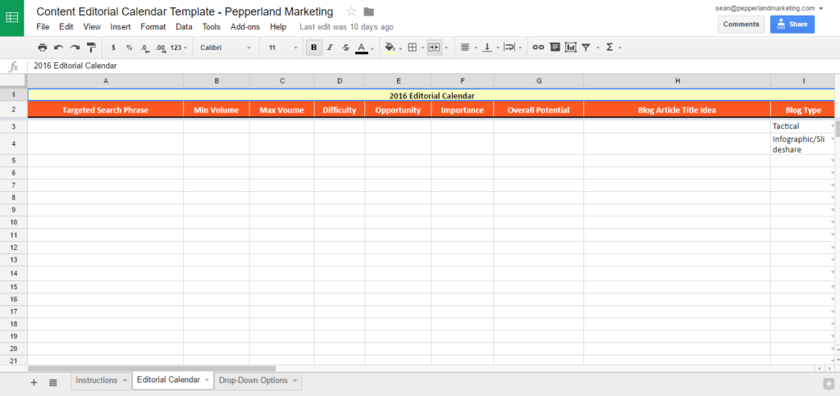
For the most effective results, we recommend publishing content through an SEO-driven editorial calendar. Download our free editorial calendar template to start creating relevant content that ranks well across all search engines.
6. Analyze and adjust content to promote consistent growth.
Once you carry out a content strategy or campaign, it’s important to review your results in order to make any needed changes or improvements.
To that end, it’s critical that your company understands that a content strategy should be a living document that evolves over time.
Think about today’s ‘modern’ consumer. Their needs, challenges, and goals have shifted dramatically in just the past year. Finding new ways to stay up-to-date with these changes is an essential part of your content marketing efforts.
You can do this by conducting content audits on a consistent, timely basis to evaluate what is, or isn’t working. We recommend analyzing performance data every 90 days, especially for new content. This provides a quick snapshot of how content is performing over a short period of time and allows your team to make any quick adjustments to newer posts.
Below are some of our favorite platforms to calculate performance metrics, along with the unique tools they offer to help analyze content:
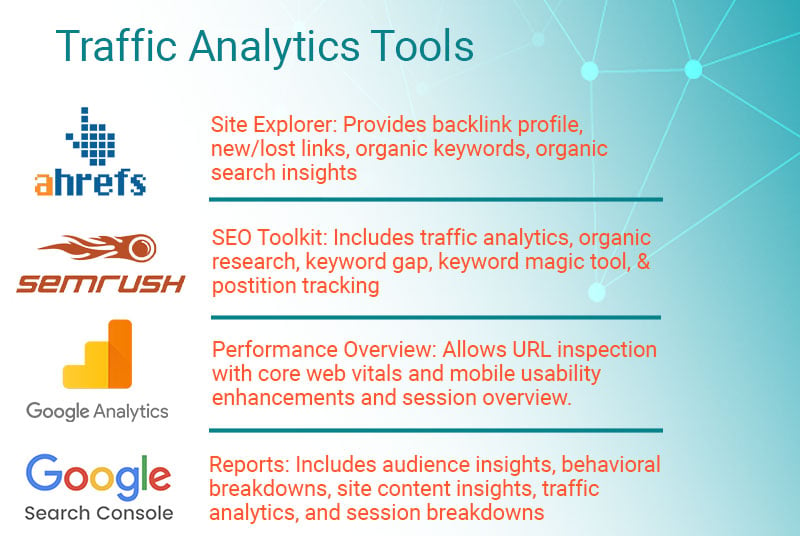
Apply the Inbound Methodology to your Content Strategy
Circling back to the original questions mentioned above, your content strategy should identify your audience, determine what they want to know, and outline how you’ll provide answers to their questions.
This process shares several similarities to the inbound methodology as well. That’s because inbound marketing is about providing solutions to audiences in a helpful, non-intrusive way.
And, by using content such as blog posts, videos, and downloadable resources, your campaign will help educate and inform buyers while guiding them through each step of the buyer’s journey.
Want to learn more about the inbound methodology? Schedule time to speak to an agency or service that specializes in inbound marketing and learn how to build a content strategy that grows traffic to your website, increases leads, and ultimately, converts more visitors into regular consumers.







